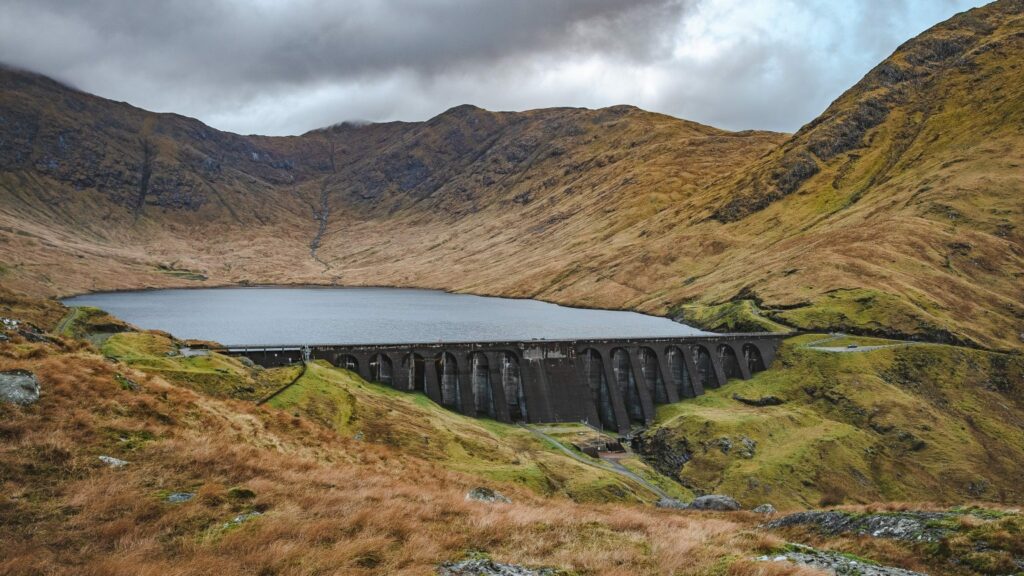Deploying large quantities of long duration electricity storage (LDES) could reduce system costs and reliance on gas, but greater policy support is needed to enable this, Aurora Energy Research has found.
In a new report, Aurora detailed how up to 24GW of LDES – defined as that with a duration of four hours or above – could be needed to effectively manage the intermittency of renewable generation in line with goals of operating a net zero electricity system by 2035. This is equivalent to eight times the current installed capacity.
Additionally, introducing large quantities of LDES in the UK could reduce system costs by £1.13 billion a year in 2035, cutting household bills by £26 – a hot topic with energy bills on the rise as a result of high wholesale power prices.
It could also reduce reliance on gas by 50TWh per year, and reduce carbon emissions by 10MtCO2.
However, currently high upfront costs, long lead times, a lack of revenue certainty and missing market signals are resulting in underinvestment in LDES, which includes technologies such as pumped hydro storage, liquid air energy storage, flow batteries and compressed air energy storage among others.
Policy support and market reforms would address some of these issues, providing revenue certainty and addressing missing markets to recognise the full value of LDES.
LDES could achieve revenues through energy trading in the wholesale market and through the balancing mechanism, which can then be supplemented through Capacity Market and ancillary service revenues, Aurora found.
However, a cap and floor mechanism would be best positioned to support the deployment of LDES, although it would not incentivise effective dispatch and additional reforms would still be required to incentivise investment.
This follows KPMG also finding that a cap and floor mechanism would be best placed to supporting LDES over mechanisms such as the Contracts for Difference scheme, a Regulated Asset Value model and a reformed Capacity Market.
KPMG found that a cap and floor mechanism would reduce risks for investors while at the same time encouraging operators of new storage facilities to respond to system needs.
Aurora, meanwhile, found that in the Capacity Market, LDES would be able to receive relatively high de-rating factors, while the initial 15-year contract could provide a significant amount of secure revenue stream for new build assets that could act as an annual revenue floor.
However, the year-on-year volatility of auction outcomes could cause the contract to be locked-in based on a relatively low clearing price.
Aurora also looked at the wholesale market, in which price spreads are expected to grow, driven by the increasing capacity of renewables and rising commodity prices, with this leading to an increase in gross margins over time. Route-to-market providers could also provide revenue floors in the wholesale market, helping to provide some protection from merchant price risk.
But high exposure to merchant risks and movement of market fundamentals such as commodity prices and economics of renewables pose a risk.
Overall, Aurora outlined how the primary issues investors will want to be addressed by policymakers when it comes to LDES is the missing markets, stating that LDES is able to provide beneficial grid services that are not currently procured individually, with the value recognition of these services missing, as well as increase policy support.
This policy support should recognise the value and long-term need for LDES, while investors will also want a percentage of long-term revenue to be contracted or have revenue guarantees to ensure debt payments.
As such, there are two different support options available to policymakers to support the development of LDES, Aurora said. Option one is direct subsidies or support mechanisms can be used to improve financeability of LDES by ensuring required cashflows for debt payment, with direct subsidies having proven track records of being able to support projects requiring large capital investment.
Option two is to indirectly support the finance case of LDES through market reforms, which Aurora said would require significant change to improve price signals to LDES and would likely need to be combined with direct support schemes to ensure the timely rollout of LDES assets.
Aurora’s report was commissioned by a group of organisations including Engie, SSE Renewables, National Grid ESO, Highview Power, Foresight, Drax, Invinity Energy Systems and Intelligent Land Investment Group among others.
Mark Wilson, CEO of ILI Group, said: “We agree that a cap and floor mechanism, similar to what is in place for interconnectors between the UK to Europe, will get all these nationally significant infrastructure projects moving, but time is critical.”
He added that having a market mechanism in place will enable the current pumped storage hydro pipeline of over 5GW to be built, with this benefiting the climate while also bringing over £3 billion in construction investment into the UK and Scotland.
ILI Group recently began the initial planning phase for a new pumped storage hydro project in Scotland able to supply 1.5GW of power for up to 30 hours. It is to be the largest pumped storage hydro project ILI has developed to date.





